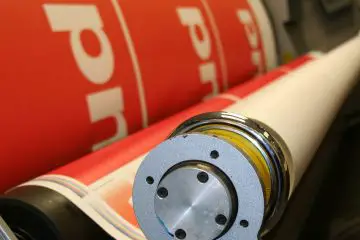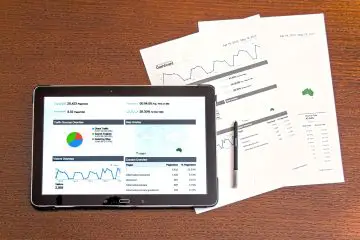The AIDA principle is a well-known marketing principle that has been used successfully for a long time. It is well suited for implementing various marketing measures in a targeted manner.
The complete sales funnel can be mapped using the four stages of the AIDA principle. So this is a good option for you to build effective measures for customer acquisition.
We explain what AIDA stands for, and what this formula is all about and give you examples of how successful sales funnels can be designed using the theory.
What are a sales funnel?
A sales Funnel is a customer-centric marketing model. So it’s about leading customers from initial contact to the desired action.
Such funnels offer companies the opportunity to advertise in a targeted manner and towards a goal to lead. What is important here is a clear structure, measurable numbers, and reproducible success.
In short: With a sales funnel you build a structure that is designed in such a way that you know pretty much exactly what the monthly expenses are and what successes can be expected from them.
In order to design a sales funnel in a meaningful way, the AIDA principle is a proven and promising model
The AIDA formula: in 4 steps to marketing success
The AIDA principle consists of a total of four steps. These run like a funnel from addressing the masses to converting the individual person into a buyer.
There are fewer people per step because even the best sales funnel can never convince the entire target group. Accordingly, the funnel shape reflects this loss of people.
The four phases of the AIDA formula are Attention, Interest, desire, and action.
1. Attention: attracting attention
Online and offline you are constantly competing with a large number of competitors. Other companies also place themselves in the (virtual) shop window and fight for the attention of the target group, whose willingness to consume advertising is constantly decreasing.
Decreasing attention span doesn’t exactly help. In the digital world, in particular, the flood of information is so gigantic that it is extremely difficult to attract attention. Milliseconds often decide whether someone stops or continues scrolling.
You can only offer your product or service if you attract the attention of your target group. You secure this attention via a well-implemented, first touchpoint.
So it’s about the first point of contact that your target group has with a product or service. This touchpoint can be very different from the AIDA principle. Conceivable are:
- Search Engine Advertising (SEA)
- Search Engine Optimization (SEO)
- Social Media (posts or ads)
- Poster
- Radio
- TV spot
- Cinema Ad
- Flyer promotion
- Street Stand
You see: There are many ways to create the first contact. What this should look like in concrete terms always depends on your target group. So take your time and design an eye-catching start for your sales funnel.
2. Interest: arouse interest
Is attention there? Then you must quickly arouse real interest. This is achieved through explanations. This is where you need to address the core benefits directly and communicate them clearly and simply.
Because at this stage the danger of a jump is very high. You have to communicate convincingly in order to convert mere attention into interest.
This can be through the salesperson in the shop or at a stand, but also through additional information in an advertisement, a commercial, or on a landing page.
The possibilities for design are therefore still diverse. It is only important that you communicate in a nutshell what makes the product or service so special. If this info isn’t quickly and clearly visible, your bounce rate will skyrocket.
Retargeting play a role. If people drop out at this stage, which often happens, you can encourage them later with targeted ads to develop an interest after all.
3. Desire: create a desire
The aim of a sales funnel is to want something. You need to make it clear to your target audience what problem you are effectively solving and why they should own your product. The boundaries between arousing interest and creating desire are often blurred.
A clumsy method would be here e.g. a price and limitation print (“Only until 12/31 35% discount.”, “Only 100 units available.”). This is a powerful, but also a very well-worn method that you should ideally not rely on.
It is better if you make your target group understand how this is done Product or service that makes everyday life easier. In this way, you trigger a real desire to have as an emotion – without compulsion or pressure.
In the AIDA principle, desire is primarily aroused by in-depth argumentation. This succeeds via brochure, catalog, sales talk, or landing page. Here, too, a jump can occur at any time, which you can correct later through retargeting.
4. Action: make the purchase
If you have correctly built your sales funnel according to the AIDA model, the person is now convinced and performs an action. This can be the conclusion of a contract at the sales stand, a purchase in a shop, or an online order.
It may also be a download, a subscription to a newsletter, or the submission of customer data for a consultation. What the action looks like can be completely different.
It is important that when building the sales funnel according to the AIDA -formula, it is always clear what the action should look like. This is the only way to align your funnel with the goal. The same rules apply here for the design of landing pages: a goal clearly focused and implemented .
Examples of the AIDA model in advertising and marketing
The AIDA model is a classic structure for advertising campaigns. How it is actually implemented can differ. So you can vary the number of touchpoints. A sales funnel can be implemented with just two points of contact.
An example: You are an enthusiastic amateur photographer and see an ad for an image processing workshop on social media. An impressive before-and-after video captures your attention while also arousing your interest.
You click on the ad and land on a landing page that captures your interest transformed into desire through good reasoning. Eventually, the workshop would solve one of your problems and result in better photos. Finally, carry out the action and log in.
An alternative example with several touchpoints could look like this: A large technology manufacturer is rolling out its latest smartphone. In the first step, which only serves to attract attention, large-scale posters are stuck showing the product without further information.
This attention phase is allowed to sink in and then by influencers via Social media (Instagram, YouTube, TikTok …).
Test reports are published here in advance, people are shown using them and technical details are revealed. Interest is aroused.
The company then places advertisements via social media and advertises an early purchase discount and a special goodie (e.g. free headphones) for all pre-orders. The desire is growing.
Behind the ad, there is now a simple shop page that can be used to quickly configure and pre-order the smartphone. When the target group makes the purchase, the AIDA principle has been successfully implemented.
Possibilities and limits of the AIDA principle
The AIDA principle is a versatile model that you can use to build different touchpoints into a large and targeted sales funnel. Used correctly, this formula offers the possibility of generating a constant flow of customers with calculable expenses.
Especially in the online area, where you sometimes pay per click for ads, this precise assessment is quite possible. You also have the opportunity here to further optimize your ads and landing pages and thus increase the conversion rate in accordance with the AIDA principle.
Of course, every theoretical model has its limitations. The AIDA formula is not a panacea and repeatedly reaches its limits in depicting reality.
In times of the digital world, the time after the purchase is increasingly important. The topic of customer loyalty plays a major role. It is often no longer about simply selling tons of products, but about emotionally binding the target group and creating a brand experience.
The time after purchase plays an important role. However, this cannot be mapped with the AIDA principle. Other models offer better options here (e.g. the ACCRA model: Awareness, Consideration, Conversion, Retention, Advocacy).
Also, the phases often do not run as linearly as the AIDA formula envisages. The clientele often fluctuates between interest and desire. Sometimes another manufacturer even attracts attention in this process and a completely new customer journey begins.
That is why it is now assumed that the target group likes to get lost in the so-called messy middle. Due to the constant possibilities for comparison on the web, people repeatedly fluctuate between interest and need, so they do not proceed directly to the purchase.
The customer journey is often not so straightforward but consists of a constant alternation between the phases.
So caution is advised: As always, the AIDA principle is just a theory that can be implemented well in practice and should not be seen as a holy grail. However, if used correctly, the model can be a useful way in marketing to generate targeted customers.








